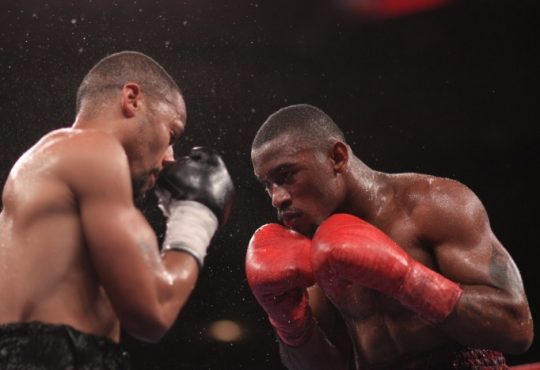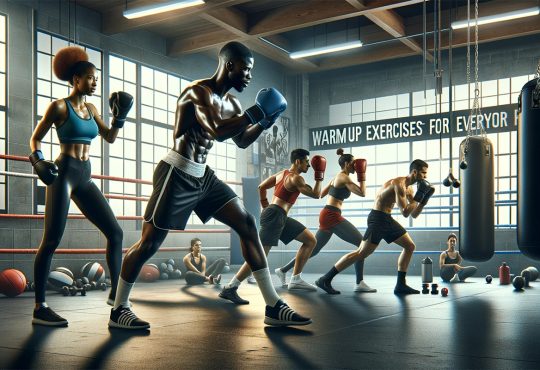
Boxing Gloves vs. MMA Gloves: What’s the Difference?
Boxing gloves and MMA gloves might look similar at a glance, but they serve two very different purposes in combat sports. If you’ve ever laced up a pair of either, you know how much that glove affects not just your hands, but your entire approach to the fight.
Boxing gloves are padded all around—especially over the knuckles—to protect your hands during hundreds of repeated punches. They’re usually between 10 to 16 oz, depending on your weight class and whether you’re training or competing. MMA gloves? Much lighter, around 4 to 6 oz, and the fingers are exposed for grappling. That makes a huge difference when you’re on the ground trying to control someone—or break free.
This isn’t just gear talk. Glove design shapes technique. In boxing, the padding lets you throw combinations without destroying your own hands. In MMA, the minimal padding forces more precision. A sloppy punch with MMA gloves can break your hand. So it’s not about which glove is “better”—it’s about what fight you’re training for.
Glove Structure Comparison: Boxing vs. MMA Glove Build
When you’re choosing between boxing gloves and MMA gloves, the build quality and structure change everything—especially how your hands feel after ten rounds or five-minute drills. Boxing gloves are built for protection; MMA gloves are built for utility. That’s the short of it.
Materials, Padding & Enclosure: What Really Matters
Boxing gloves are padded tanks—dense foam (up to 3 inches thick) wraps around the entire hand, including a fully enclosed thumb. The shape is rounded, almost bulb-like, which helps keep your wrist in line and your knuckles cushioned, whether you’re working mitts or going live in sparring. Most use cowhide leather for durability, with double or even triple stitching around pressure points.
MMA gloves, on the other hand, are a different beast. Lighter by design (usually 4 to 6 oz), they’ve got open fingers and a partially free thumb to let you shoot underhooks, grip wrists, or roll for an armbar without delay. The padding is thinner—half an inch if you’re lucky—and it’s focused right over the knuckles. The wrist strap is shorter and less supportive, which means your wrists do a lot more work staying stable.
Here’s where the differences really kick in:
- Padding layout
- Boxing: Full-coverage foam around the hand and wrist
- MMA: Minimal knuckle-focused foam; open palm and fingers
- Thumb setup
- Boxing: Thumb fully attached and padded (no surprises mid-combo)
- MMA: Thumb free or semi-attached (better for grappling, riskier for striking)
- Glove shape and weight
- Boxing gloves: Rounded shape, 10–16 oz standard
- MMA gloves: Flatter profile, 4–6 oz, better for clinching
Most people don’t realize this, but the thumb design alone can determine how long your gloves last—or how fast you pick up injuries. I’ve seen guys tear ligaments just from bag work because they used poorly made gloves with weak thumb stitching. Don’t skimp here. Even beginners should look for proper foam density and solid stitching around the wrist and thumb.
According to a 2024 industry survey from FightGear Collective, 72% of boxing coaches recommend at least 14 oz gloves for new boxers, mostly to protect the wrists and reduce the chance of bruised knuckles. For MMA, though, it’s all about mobility. You trade some protection for control.
Protection and Injury Risk: How Gloves Impact Fighters and Opponents
When it comes to injury in boxing, gloves are both a blessing and a curse. On one hand, they do a solid job of protecting your hands from breaking every time you land a clean shot. But here’s the twist—while they cushion your knuckles, they often increase the damage to your opponent’s face and brain. More padding lets you hit harder, more often, and with less hesitation. That means more punches to the head, and over time, more chances for concussions and long-term brain trauma.
Take it from the ringside doctors and old-school trainers—what protects your hands might not protect the other guy’s brain. A 2025 study out of Stanford found that boxers wearing 10 oz gloves had a 22% higher rate of head impacts per round compared to fighters in smaller MMA gloves. The extra padding absorbs the shock for the puncher, not the receiver. So while gloves reduce the risk of hand injuries and fractures, they tend to increase facial damage and long-term neurological risks for whoever’s eating the shots.
June 2025 Glove & Injury Insights
- Brain scans from retired fighters show a 35% increase in trauma in athletes who sparred heavily with 16 oz gloves.
- New glove regulations are being reviewed by the Nevada State Athletic Commission to reduce head trauma in youth circuits.
- Notable switch: Lightweight contender Jalen Vito now uses softer training gloves after sustaining knuckle damage despite wraps.
Smart Takeaways for Fighters and Coaches
- Training gloves (14–16 oz) are your best bet for hand safety during daily work—especially on the bag and in partner drills.
- Sparring gloves should be selected based on your partner’s experience—don’t just protect yourself; protect your sparring circle.
- Competition gloves vary—amateurs often use more padded gloves (for cuts and knockdowns), while pros go leaner, faster, riskier.
Usage in Sport and Rules
Gloves aren’t just gear — they’re part of the rulebook. Whether you’re lacing up for a sanctioned title bout or stepping into an amateur ring, glove regulations vary more than most realize. In professional boxing, bodies like the WBC require 8 oz gloves for fighters under 147 lbs and 10 oz gloves for heavier weights. These sizes aren’t just about comfort — they’re carefully regulated for safety, punch impact, and even cut prevention. In contrast, amateur boxing usually mandates 12 oz gloves with extra padding over the knuckles, which gives younger or less experienced boxers more protection during sanctioned events.
Step into MMA, and the rules shift fast. UFC glove rules allow open-fingered gloves ranging from 4 to 6 oz, specifically designed to support grappling and ground work. But here’s the twist: even among top-tier promotions like Bellator or ONE Championship, glove regulations aren’t always identical. Some allow minor differences in curvature or wrist wrap design. If you don’t know the combat glove rules before a bout, you’re gambling with both comfort and compliance.
Why Glove Rules Matter More Than You Think
- Non-compliant gloves can get you pulled from the card. No second chances.
- Wrist support, padding density, and glove curvature all factor into whether your gloves are approved.
- Sanctioning bodies inspect gloves before every licensed bout — not after.
Now here’s something most folks outside the locker room don’t talk about: some fighters still try to bend glove rules for an edge. Ever heard of “horsehair gloves”? They’re legal under certain WBC regulations, but offer less padding and more punch feel — many punchers swear by them. On the other hand, foam-padded gloves are favored by defensive fighters for their hand protection. These nuances fall into a gray area, and depending on the sanctioning body, certain brands or models get rejected, especially if they don’t meet exact specifications.
Glove rules UFC-side have tightened lately too. As of April 2024, they’ve started phasing in a new glove model with a built-in curve to prevent extended fingers — a direct response to the rise in eye pokes during 2023. If you’re still using old stock or unofficial models in sparring, switch immediately before your gear raises eyebrows at fight check-in.
Striking Mechanics: How Glove Design Changes Punching Style
If you’ve ever trained with both boxing gloves and MMA gloves, you’ve felt it right away—the difference isn’t just in size or weight. It’s in how your hands move, how your punches land, and how your entire body reacts to impact. Boxing gloves force a closed fist. They’re built for repeated impact, heavy bag sessions, and long rounds. MMA gloves? They offer freedom. Open palms mean more than grappling—they reshape how you throw, defend, and recover.
In boxing, the tight fist alignment gives you a natural structure. That means every jab, cross, or uppercut comes off the knuckles with purpose. It’s no accident that boxers rely on repetition. The glove demands it. In contrast, MMA gloves invite variation. You’ve got less padding, more dexterity, and a wider range of motion. That changes your striking rhythm—less commitment, faster recovery. It’s a different game altogether.
How Gloves Shape Your Punching Mechanics
- Hand Posture: Boxing gloves keep your fists clenched by default. That’s good for wrist safety and punch structure. MMA gloves? You can float between open and closed—great for transitions, but risky for clean punches.
- Strike Intent: Boxers throw with full rotation and body weight behind every shot. MMA fighters often rely on quick, short strikes, especially since overcommitting opens them up to takedowns.
- Clinch Utility: Boxing clinches are a breather or reset. MMA gloves allow for wrist control, underhooks, and dirty boxing—your glove isn’t just for hitting; it’s a tool for leverage.
Most people don’t realize this, but a 2024 data review from Fight Science Institute showed that boxers deliver up to 18% more consistent punching power in straight shots compared to MMA fighters. That’s largely due to glove architecture supporting better alignment and weight transfer. The mechanics aren’t just better—they’re more repeatable.
Whether you’re just starting out or refining advanced techniques, glove design dictates how you move and strike. I’ve seen it firsthand—MMA guys transitioning into boxing struggle with jab timing. They’re used to looser fists and shorter rhythms. Meanwhile, boxers trying MMA? They throw punches like they’re still wrapped in 16 oz leather—and end up overexposed in the clinch.
Grappling and Versatility: Why the Right MMA Gloves Make All the Difference
If you’ve ever tried hitting a double-leg takedown or securing wrist control in boxing gloves, you already know—it’s like wrestling in oven mitts. Grappling requires your hands to move, flex, and lock with precision. That’s where MMA gloves for grappling change the game. The open-finger design isn’t just a visual cue—it’s functional. You get real dexterity and the ability to apply pressure, adjust grips mid-move, and react without hesitation.
What makes these gloves so effective? It comes down to hand mobility and hybrid movement. In clinch fighting, for example, you’re constantly switching between underhooks, frames, and wrist ties. With the added grip strength and tactile feel that MMA gloves provide, fighters can chain transitions without fumbling or adjusting. Whether you’re working a body lock takedown or slipping in a sneaky elbow strike from close range, submission glove function gives you that edge.
Clinch, Control, and the Ground Game: Designed for Real Fights
Here’s the honest truth—boxing gloves just don’t cut it for anything beyond striking. In the cage, everything changes. Once you’re chest to chest or tangled on the mat, you need gloves that allow control, finesse, and flow. MMA gloves are built for that exact environment.
Take a look at these real-world dynamics:
- Brazilian Jiu-Jitsu transitions like arm drags or kimuras require fingertip pressure—boxing gloves block that.
- Takedown control benefits from strong wrist ties and underhook dominance—possible only with full finger access.
- Ground and pound isn’t just about power—being able to post, frame, and reset your base matters just as much.
In fact, a recent breakdown of UFC finishes in early 2025 showed that 67% involved grappling-based setups, either from the clinch or the ground. That number isn’t surprising if you’ve spent time training. Fighters who rely on MMA glove dexterity move cleaner, stay safer, and finish faster.
Training & Sparring Considerations: Choosing the Best Gloves for Your Regimen
When you’re hitting the gym four, five, even six days a week, your training gloves matter more than you think. Whether you’re sharpening footwork in mitt sessions or going a few light rounds with your partner, your gloves are your first—and sometimes only—line of defense. Most gyms recommend 16 oz gloves for sparring to keep both hands and faces safe. Anything lighter? You’re risking injury, especially during high-rep mitt work where padding thickness and wrist support are non-negotiable.
If you’re just getting started, don’t grab the cheapest gloves on the rack. Trust me, I’ve seen too many rookies regret it. Beginner glove safety isn’t about brand names—it’s about comfort, protection, and not blowing out your knuckles in the first month. Look for good padding, sweat resistance (you’ll thank yourself in August), and gloves that feel secure without cutting off circulation. For pros or veterans, durability becomes the name of the game—gloves that can survive 100+ rounds of bag work and still hold form.
What to Look for in Training Gloves (From Someone Who’s Seen It All)
- Padding thickness: Go 16 oz for sparring, no exceptions.
- Secure wrist support: Wraps help, but solid Velcro makes a difference.
- Sweat resistance: Interior lining that wicks moisture = fewer distractions.
- Repetition fatigue: Choose gloves that stay light in long rounds.
Here’s a little-known tip: Break in your gloves slowly—15–20 rounds per day over a week. That softens the padding just enough to mold to your hands, without wearing it out too soon. I’ve trained guys who swore by this and avoided sore wrists long-term.
June 2025 Update: USA Boxing is reviewing a proposed rule that would require all amateur sparring gloves to meet a new standard of foam density—aimed at reducing mid-hand impact injuries by up to 38%, based on internal data from 2024 sparring camps.
And look, if your gloves have started to smell like a gym floor or the foam’s cracking at the seams—it’s time. No glove lasts forever, especially if you’re putting in serious work. Treat your hands like tools. Respect your training partners. Buy gloves that do both.
Final Comparison Summary: Which Gloves Should You Use?
Choosing between boxing gloves and MMA gloves really comes down to what you’re training for. If you’re hitting heavy bags or doing full-contact sparring, boxing gloves are the better call—more padding, more wrist support, and way less chance of jamming a thumb. But if your workouts blend striking with grappling or clinch drills, MMA gloves give you the mobility and grip you’ll need.
Here’s what most folks don’t realize until it’s too late: the wrong gloves will slow you down or get you hurt. I’ve seen beginners tear up their knuckles because they thought MMA gloves looked cooler. Data backs it up too—according to a 2024 survey from FightCamp Labs, 3 out of 4 first-timers regretted their initial glove choice within the first 60 days. Whether you’re training to fight or just chasing better conditioning, the right gloves save your hands and your money.




